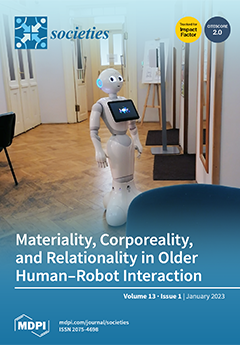Despite the impact that climate change is having on our planet and considering its consequences for future generations, much of the academic literature focuses on adolescent and adult perceptions, giving little relevance to children’s perceptions. Children’s voices have the potential to influence public
[...] Read more.
Despite the impact that climate change is having on our planet and considering its consequences for future generations, much of the academic literature focuses on adolescent and adult perceptions, giving little relevance to children’s perceptions. Children’s voices have the potential to influence public opinion, which may in turn determine the direction of a new policy on the climate crisis. In this context, it is urgent that we understand how children perceive this problem. This quantitative study was based on the application of 245 questionnaires to children aged between 9 and 13 years old from five schools in north-eastern Portugal, more specifically in the region of Trás-os-Montes. We can say that this study was a convenience study because we delivered the surveys in the schools closest to the working area of the researchers. We used a questionnaire with 26 questions, 24 of which had closed responses (like the Likert type), one open response, and one with multiple choices. In this work, we conducted a descriptive and inferential statistical analysis, and prepared a database, using the statistical software IBM SPSS, which allowed us to conduct some statistical tests, selected according to variables. For the descriptive analysis, several parameters were used for the distribution of variables, namely, frequency, percentage, mean, and standard deviation. We rejected the null hypothesis (H0) and assumed for the inferential analysis that the sample does not follow a normal distribution, considering the fulfillment of the necessary criteria for parametric tests and after performing the Kolmogorov–Smirnov normality test, whose null hypothesis (H0) is that data are normally distributed, and given that the
p-value for the variables under study was
p < 0.05. In this regard, non-parametric tests were used. The Mann–Whitney test was used to compare the degree of agreement with climate change statements as a function of the student’s gender and year of schooling, which is a non-parametric test suitable for comparing the distribution functions of an ordinal variable measured in two independent samples. The results show that most of the children expressed concern about the study’s potential problem, and (42%) said they are concerned about climate change. However, they show some doubts and a lack of knowledge about some of the themes, like (33.5%) cannot name only one consequence of climate change. We also found differences between the two study cycles, with children in the 6th grade having a higher average in their understanding of the phenomenon (
p = 0.049), as well as the level of education of the parents being positively correlated with a more ecocentric posture, we can see this when we considering the variable parents. We also found that 46.6% of the students say that television is where they learn more about climate change. From the results obtained, we can open new paths for future research and contribute to the definition of policies and educational practices since the school has the responsibility to cooperate in the production of values, attitudes, and pro-environmental behaviors.
Full article





